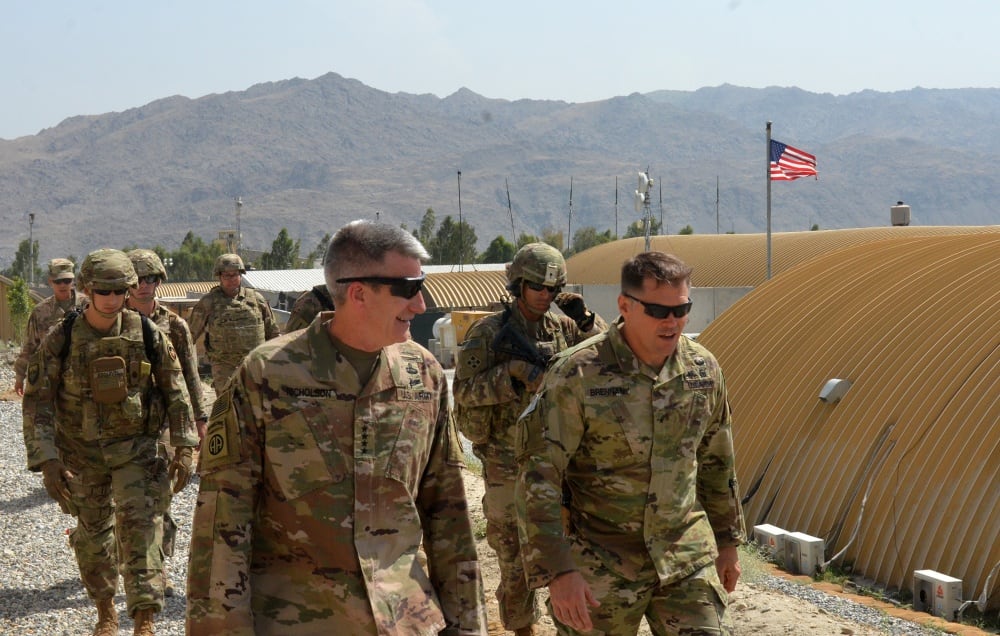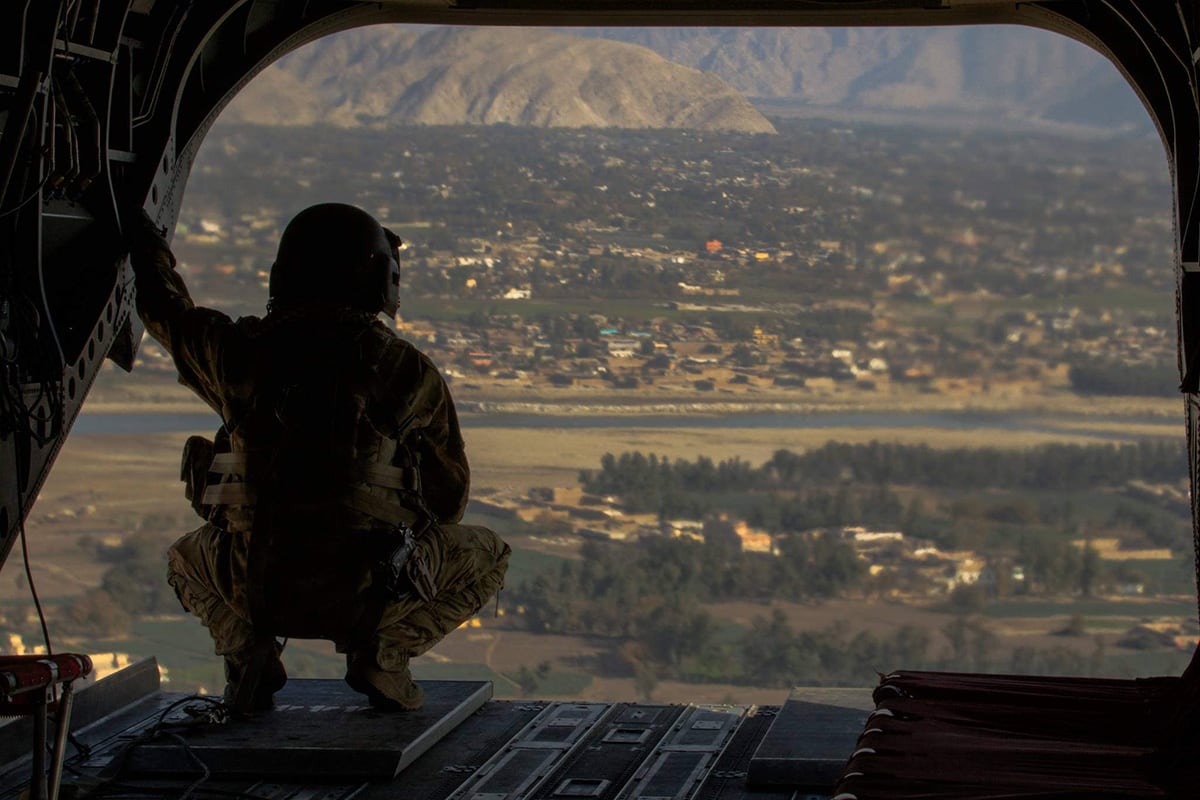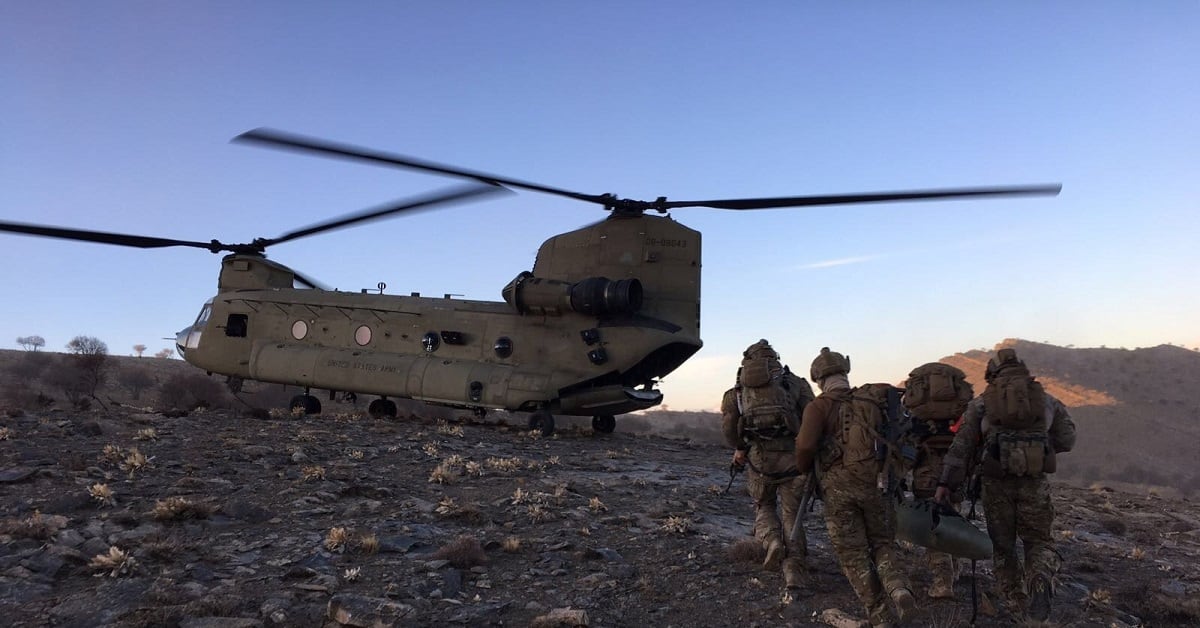Despite renewed violence and few measurable gains in territorial security, the South Asia Strategy is working and has finally given coalition and Afghan forces the support they need to get to a negotiated peace with the Taliban, the departing top U.S. general in charge of Afghanistan operations said Wednesday.
Army Gen. John Nicholson, commander of NATO’s Resolute Support mission and U.S. Forces-Afghanistan held his final press conference Wednesday on the state of operations in Afghanistan before his replacement, Army Lt. Gen. Scott Miller, takes over through a change-of-command ceremony in the next few weeks.
What the strategy needs, Nicholson said, is more time to realize gains from new offers for cease fires by the Afghan government and take advantage of a desire by some elements of the Taliban to negotiate with the Afghan government.
“We have an unprecedented opportunity for peace now,” Nicholson said.

Seth Jones, a former plans officer and adviser to the commanding general, U.S. Special Operations Forces Afghanistan who now focuses on that country’s security at the Center for Strategic and International Studies, acknowledged that the Taliban have been prevented from holding major urban areas in the last year. However he challenged the idea that the South Asia Strategy would deliver negotiated peace.
“When you look at how most successful negotiations have ended,” the opponent is often in pretty bad shape, Jones said. “At this point I don’t see the Taliban viewing itself as losing, or even potentially, views the situation as a stalemate right now .... I think they believe they are winning. This means they are a lot less desperate for a settlement now than the Afghan government is, or the U.S. is."
Nicholson assumed command of U.S. and NATO forces in Afghanistan in March 2016. Since then, he said the mission has seen Afghan forces take the lead in military operations, seen the impact of U.S. forces having increased authorities to take offensive measures against the Taliban, Islamic State and other militant groups operating there, and a psychological impact of the abrupt halt to the planned draw down of U.S. forces there.
RELATED

Before the new authorities and South Asia Strategy were announced by President Donald Trump’s administration in August 2017, “we were on a glide path to reduce our forces, and eventually to close down the mission,” said Nicholson, who was the final Afghan general appointed by former President Barack Obama. “At that time, the enemy had no incentive to negotiate, because we were leaving .... the enemy believed we had lost our will to win. And all they needed to do was wait us out.”
What makes the South Asia Strategy different is that it is conditions-based, Miller said. Previous strategies were also conditions based, however Miller said the knowledge that U.S. forces were leaving hurt that approach.
The U.S. has increased its troop presence from 8,400 in the final months of Obama’s term to about 16,000 now, according to Congressional officials. The Pentagon no longer makes the numbers of actual troops on the ground available, instead provides it last reported figure of 14,000.
It is also unclear whether the gains Nicholson was highlighting will be enough for President Trump, who has repeatedly questioned the cost of the war. To date, military operations and stabilization efforts have cost more than $900 billion in Afghanistan, according to the Special Inspector General for Afghanistan Reconstruction. The fiscal year 2019 budget request for U.S. operations in Afghanistan is $46.3 billion, a total which includes $5.2 billion to train Afghan security forces.
Twenty-eight U.S. service members have died in Afghanistan during Nicholson’s command, many of them during operations to rid Afghanistan’s border with Pakistan from recurring cells of Islamic State fighters, and in the southwest, where despite 17 years of U.S. military presence and billions of dollars in training and equipment, Afghan security forces have been unable to eliminate persistent Taliban attacks.
More than 2,400 military and civilian personnel have been killed since operations in Afghanistan began in 2001, and more than 20,000 wounded, according to DoD casualty data.
RELATED

Nicholson’s tenure ends amid some highly visible gains, such as the Afghan Air Force launching and sustaining their own air operations. However, it also comes amid reports from the Special Inspector General for Afghanistan Reconstruction that Taliban forces have increased the percent of Afghanistan they control, and the numbers of trained Afghan security forces have declined. Pentagon estimates have about two-thirds of the country’s population in areas under Afghan government control, with the rest still contested or being held by Taliban fighters.
Miller, Nicholson’s replacement, has already rankled some members of Congress during his June confirmation hearing when he told them "I can’t guarantee you a timeline or an end date,” as to when operations in Afghanistan would end. Both Nicholson and Miller have emphasized that with the number of terror groups operating in Afghanistan, to depart without reaching a negotiated peace with the Taliban would leave the U.S. mainland vulnerable to future attacks. Much of the training for the Sept. 11, 2001, attacks on the U.S. took place in Afghanistan.
Miller, who would be the 17th commander to oversee the Afghanistan mission, most recently commanded Joint Special Operations Command.
Tara Copp is a Pentagon correspondent for the Associated Press. She was previously Pentagon bureau chief for Sightline Media Group.





